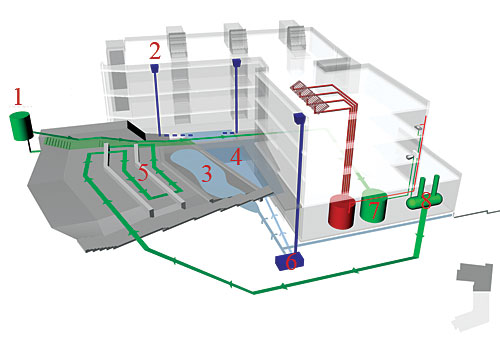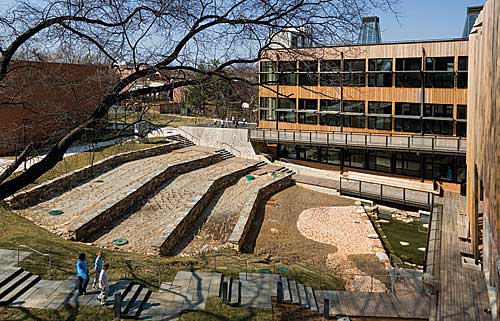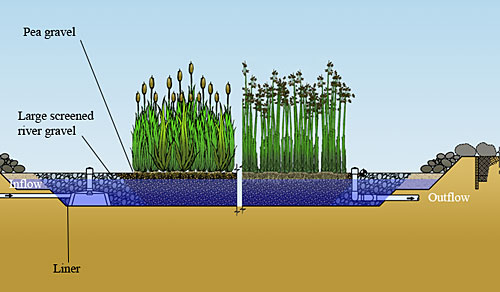Toward a Cybernetic Site
Sidwell's wetland consists of microorganisms and microinvertebrate populations attached to the root hairs of plants, mostly stalked bulrush, a form of papyrus. Ogden says the thousands of bacteria types found on the roots of such plants ensure that most compounds in the sewage can be treated, noting that wetlands are better at removing prescription medicines from water than most utility wastewater-treatment plants. Sidwell's wetland is of the subsurface-flow variety, where water lies beneath layers of pea gravel. Subsurface-flow wetlands, as opposed to the surface-flow type, are used when it would be likely for people to regularly come into contact with the water and when odors could pose problems. (A Living Machine, a proprietary tank-based constructed wetland, typically needs to be confined to a restricted room because of odors and health concerns.)
Finally, the water passes through a sand filter, where anything the wetland missed is removed prior to collecting the water in a storage tank where it can be used for flushing toilets. Color-coded purple pipe, required by the Uniform Plumbing Code, indicates gray-water systems in the building, which prevents plumbers working in the building in years to come from cross-connecting with potable systems. Further, Ogden says his company injects biodegradable blue dye into the water to prevent confusion.
Â
Â
|
While a school may not pose significant challenges to a wetland, since even conventional cleaning products are generally easily filtered, Ogden has used wetlands in tough cases like landfills, refineries, food-processing facilities, and slaughterhouses, all in a variety of extreme climates. "They are much better than industrial technology, since machines break," Ogden says. "We need to rely on self-organizing, self-regulating systems that connect to the natural environment."












